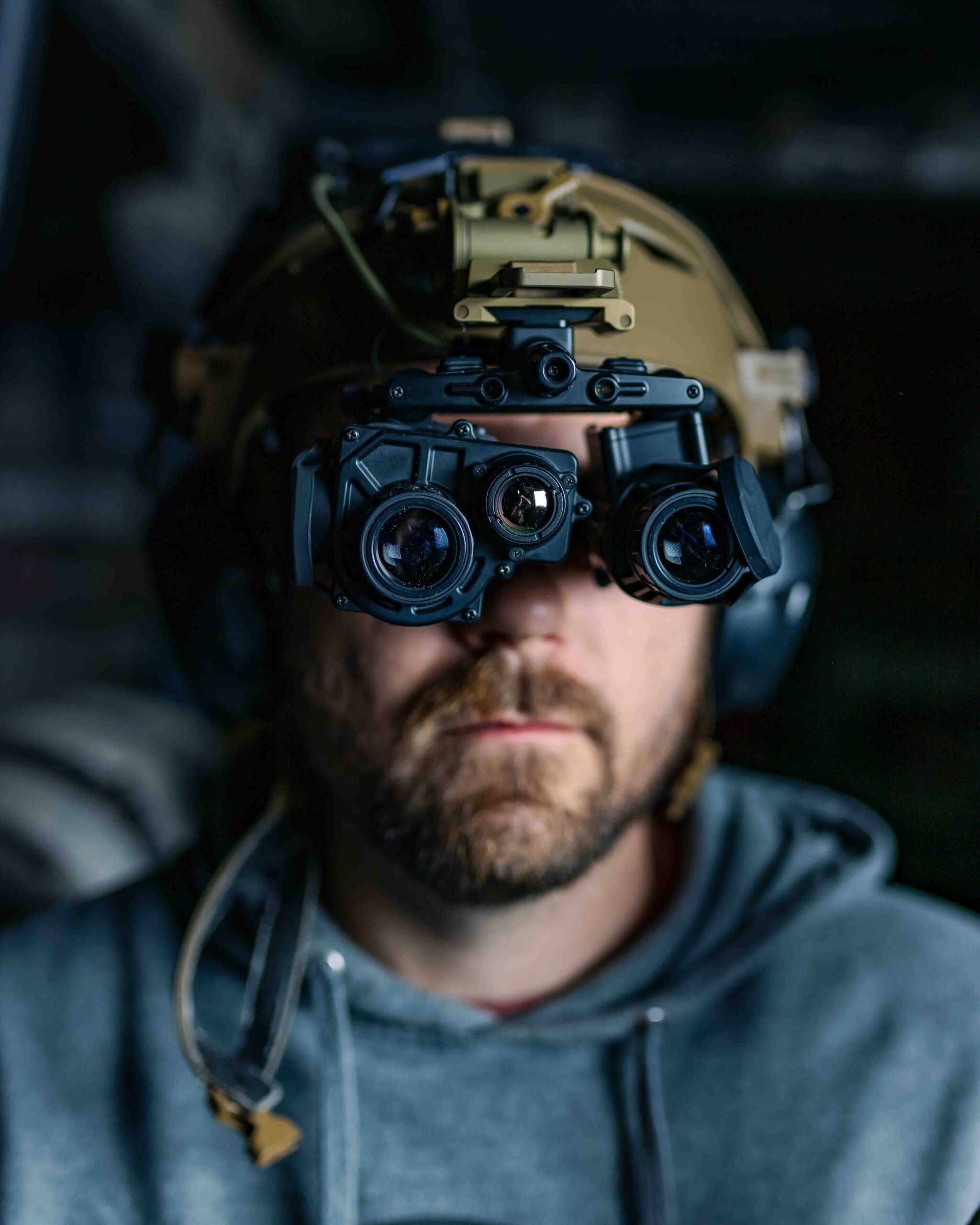The Three Types of Thermal
- December 13, 2023
- By Brenton
The Three Types of Thermal
If you know us, you know that we love thermal and see the value in using it in combination with night vision. You might not have known it… but there are three types of thermal that exist.
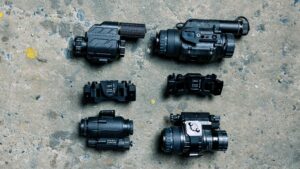
Thermal at its core is simply just capturing infrared light and its varying strengths of infrared radiation emission. So when it comes to “different” types of thermal, we are talking about how that thermal is portrayed to the eye.
The three types of thermal are dedicated, overlayed and fusion devices. Each device has the capability of thermal and is shown in varying degrees of quality as well as different use cases.
Watch an in-depth video on the subject here.
Dedicated Thermal

Dedicated thermal is by far the most common type of thermal on the market. It typically is a monocular device that features 640 or 384 core resolution. A good example of a dedicated thermal device would be an InfiRay Outdoor RH25 Thermal Monocular.
First of all, dedicated thermal can be used (depending on the device) as a handheld, weapons-mounted, or helmet-mounted device. They are extremely versatile and also some of the highest quality because it’s only job is thermal. Additionally, most units also feature in-unit recording and photo taking capabilities. This is key for those of you out predator hunting (so you can get those sick kill shots). While on that topic, who is dedicated thermal for?
Dedicated thermal is for anyone looking to build a dual band system and wanting to get the highest quality thermal available. You cannot beat

having a dedicated thermal device in your kit. You cannot get clearer quality for identifying potential threats. Another key point is that dedicated thermal is great for predator hunting as it gives you more options. It not only is useful on your helmet (or in hand), some units can be quickly clipped in front of your rifle scope to make for some great versatility in the field.
Overlayed Thermal
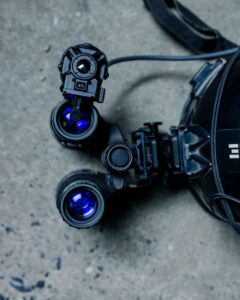
The second type of thermal is overlayed. This is definitely not as common as a dedicated thermal device, but it is readily available. Overlayed thermal is typically a little thermal unit with a lens and projector. It can be clipped onto an existing night vision device and project thermal on the front of the tube. A good example of an overlayed device would be a Jerry CE5.
How does it work?
Overlayed thermal is typically used on helmet mounted binoculars. Also, It can be used on a monocular (like a PVS-14) but most people will decide to get a dedicated thermal and build a true dual band system. One interesting thing about overlayed systems is that you can typically adjust them to only show the hottest parts of an image. For example, say you can a person in front of a wide open field. If you have the unit adjusted right, you can see the thermal overlayed on just the person and nothing around it. This allows you to use the night vision to navigate and thermal to identify.
All things considered, the benefit of an overlayed system is that for those who already have binos and want thermal capability, they can simply attach an overlay
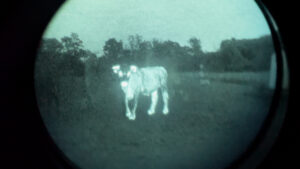
device. The only downside of overlaying thermal is the quality. Being that the thermal image is projected, going through the front lens, through the tube, and through the rear lens, the image will be effected and result in a lower quality thermal image. As shown below, the CE5 is great at showing the hotspots. If your aim is to simply look for heat and make out a shape than that will not affect you. Contrarily, if you are looking for a detailed image, go for a dedicated thermal.
Fusion Thermal

Fusion thermal is by far the most inaccessible type of thermal to get. It is typically very expensive (starting around 11k) and very hard to find with good night vision tubes in. Fusion thermal is the best variation of putting thermal and night vision together. How the thermal is viewed is the biggest difference between fusion and overlay. Fusion units have a transparent screen built in front of the night vision tube. This allows the viewer to see the thermal first, then the night vision. While not as crisp as dedicated thermal, fusion devices have amazing quality built in. A solid fusion device that we have used would be a Jerry FB.
As with the overlayed thermal, fusion binoculars can be adjusted to view full thermal, thermal outlines, or a hybrid. Regardless, we typically prefer using a
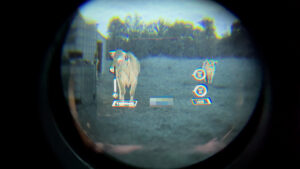
hybrid setting and keeping the thermal on just enough to see the hot parts.
As a result, a unit like the Jerry FB is for people who want to seamlessly have night vision and thermal fused together into one unit.
Interested in a thermal device?
If you are looking for any type of thermal device, shoot us an email at cs@arkayne.com and we can answer your questions. Lastly, if you are looking for supplemental gear, check out Arkayne.com to see what we have to offer.





